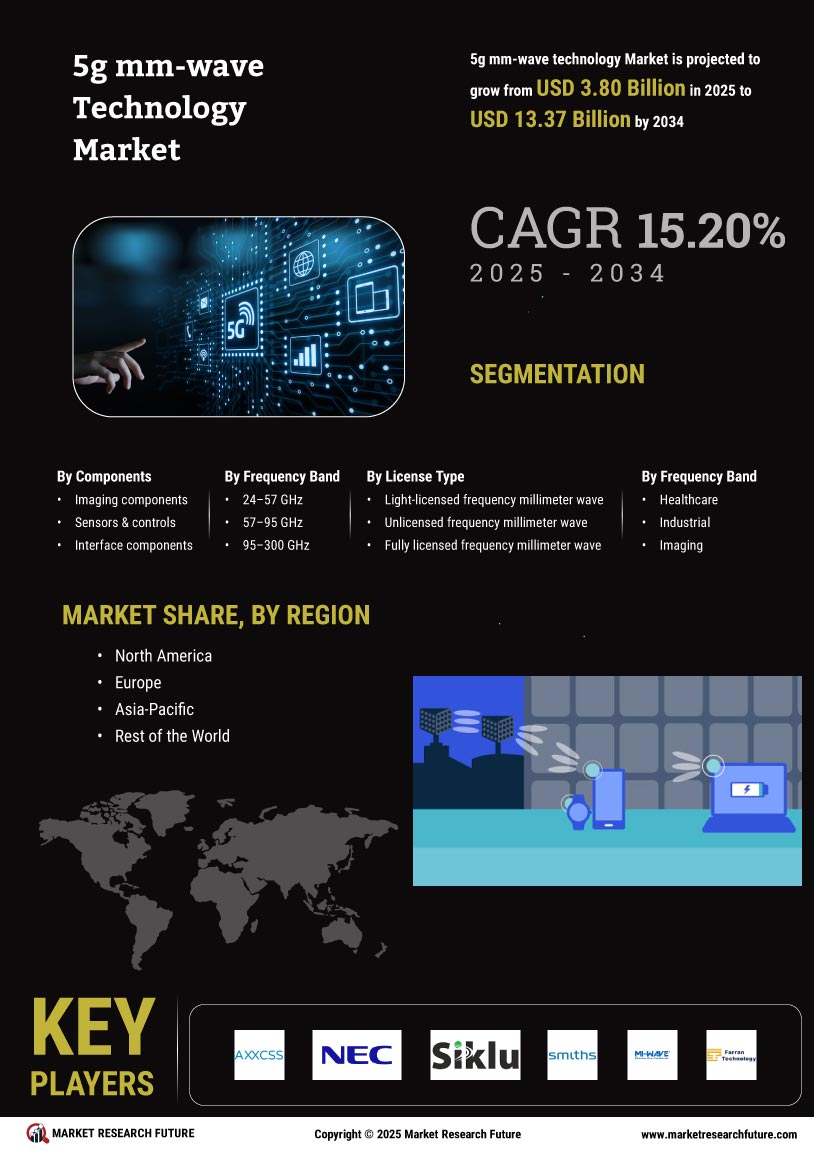Emergence of New Business Models
The 5G MM Wave Technology Market is witnessing the emergence of new business models that leverage advanced connectivity solutions. As businesses explore innovative ways to enhance their operations, the capabilities offered by 5G MM Wave technology are becoming increasingly attractive. This technology enables the development of services such as ultra-reliable low-latency communications and massive machine-type communications, which can transform various sectors, including healthcare, transportation, and entertainment. Market analysts suggest that the adoption of these new business models could lead to a substantial increase in revenue streams for companies that effectively integrate 5G solutions. Consequently, this trend is likely to stimulate further investment in the 5G MM Wave Technology Market, as organizations seek to capitalize on the opportunities presented by this transformative technology.
Enhanced Mobile Broadband Services
The 5G MM Wave Technology Market is significantly influenced by the enhancement of mobile broadband services. As mobile users increasingly seek faster and more reliable internet access, telecommunications providers are compelled to upgrade their networks to 5G standards. The introduction of 5G MM Wave technology facilitates enhanced mobile broadband experiences, characterized by higher data rates and improved user experiences. Market data suggests that the average mobile data traffic per user is expected to increase substantially, reaching over 30 gigabytes per month by 2025. This trend underscores the necessity for advanced technologies that can accommodate growing data demands, positioning 5G MM Wave technology as a crucial component in the evolution of mobile broadband services.
Support from Government Initiatives
Government initiatives play a crucial role in shaping the 5G MM Wave Technology Market. Many governments are actively promoting the deployment of 5G infrastructure through funding, policy support, and regulatory frameworks. These initiatives aim to accelerate the rollout of 5G networks, which are essential for economic growth and technological advancement. For instance, various countries have established national strategies to enhance digital connectivity, which includes significant investments in 5G technology. This supportive environment is likely to encourage private sector participation and innovation, further driving the adoption of 5G MM Wave technology. As a result, the market is expected to witness robust growth, fueled by collaborative efforts between public and private entities.
Rising Demand for High-Speed Connectivity
The 5G MM Wave Technology Market is experiencing a surge in demand for high-speed connectivity, driven by the proliferation of data-intensive applications. As consumers and businesses increasingly rely on seamless internet access for activities such as streaming, gaming, and remote work, the need for faster and more reliable connections becomes paramount. According to recent estimates, the demand for high-speed internet is projected to grow at a compound annual growth rate of over 30% in the coming years. This trend is likely to propel investments in 5G MM Wave technology, as it offers the necessary bandwidth and low latency required to support these applications. Consequently, telecommunications companies are prioritizing the deployment of 5G infrastructure to meet this escalating demand, thereby enhancing the overall market landscape.
Advancements in IoT and Smart Technologies
The integration of Internet of Things (IoT) devices and smart technologies is a pivotal driver for the 5G MM Wave Technology Market. As industries adopt IoT solutions for automation and efficiency, the need for robust connectivity becomes increasingly critical. The 5G MM Wave technology, with its ability to support a vast number of connected devices simultaneously, is well-positioned to cater to this demand. Reports indicate that the number of connected IoT devices is expected to reach over 75 billion by 2025, necessitating advanced communication technologies. This proliferation of IoT applications, ranging from smart cities to industrial automation, is likely to stimulate investments in 5G infrastructure, thereby fostering growth within the 5G MM Wave Technology Market.


















Leave a Comment